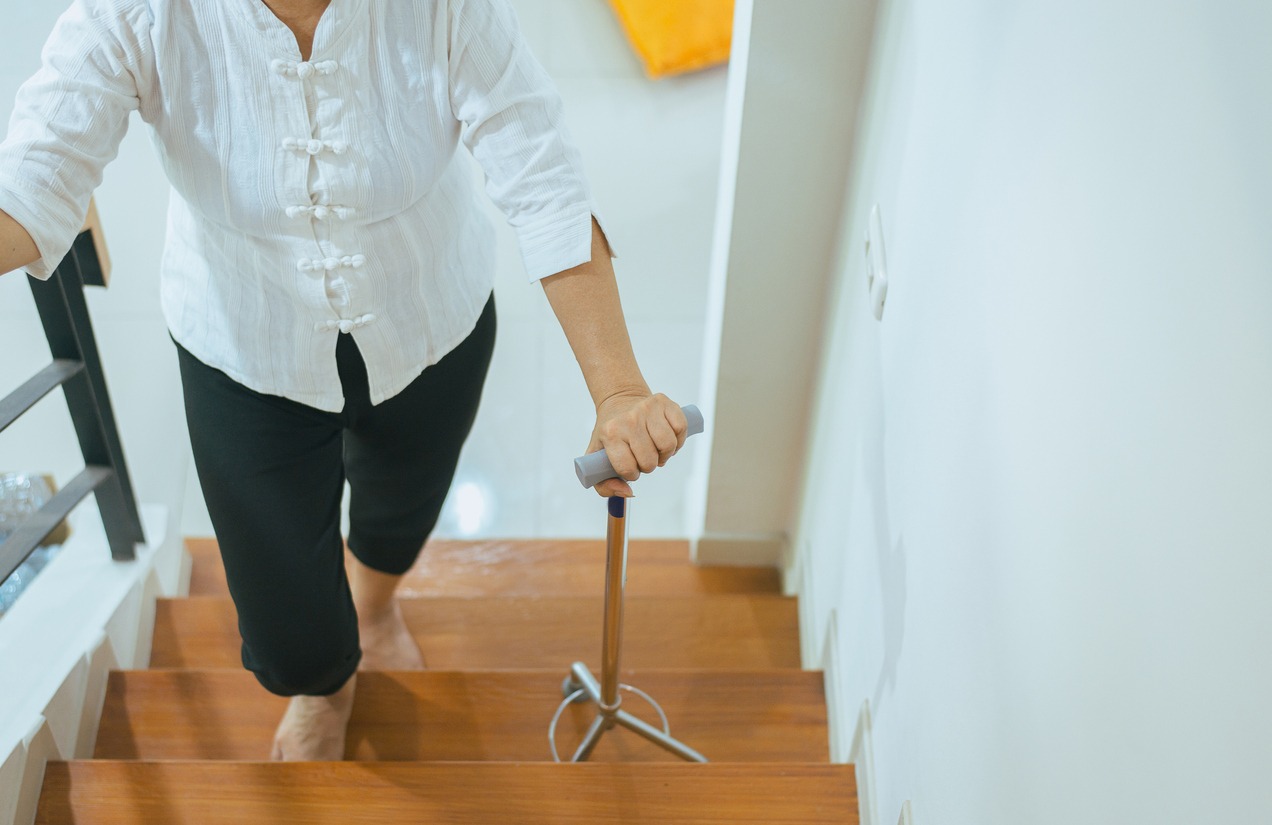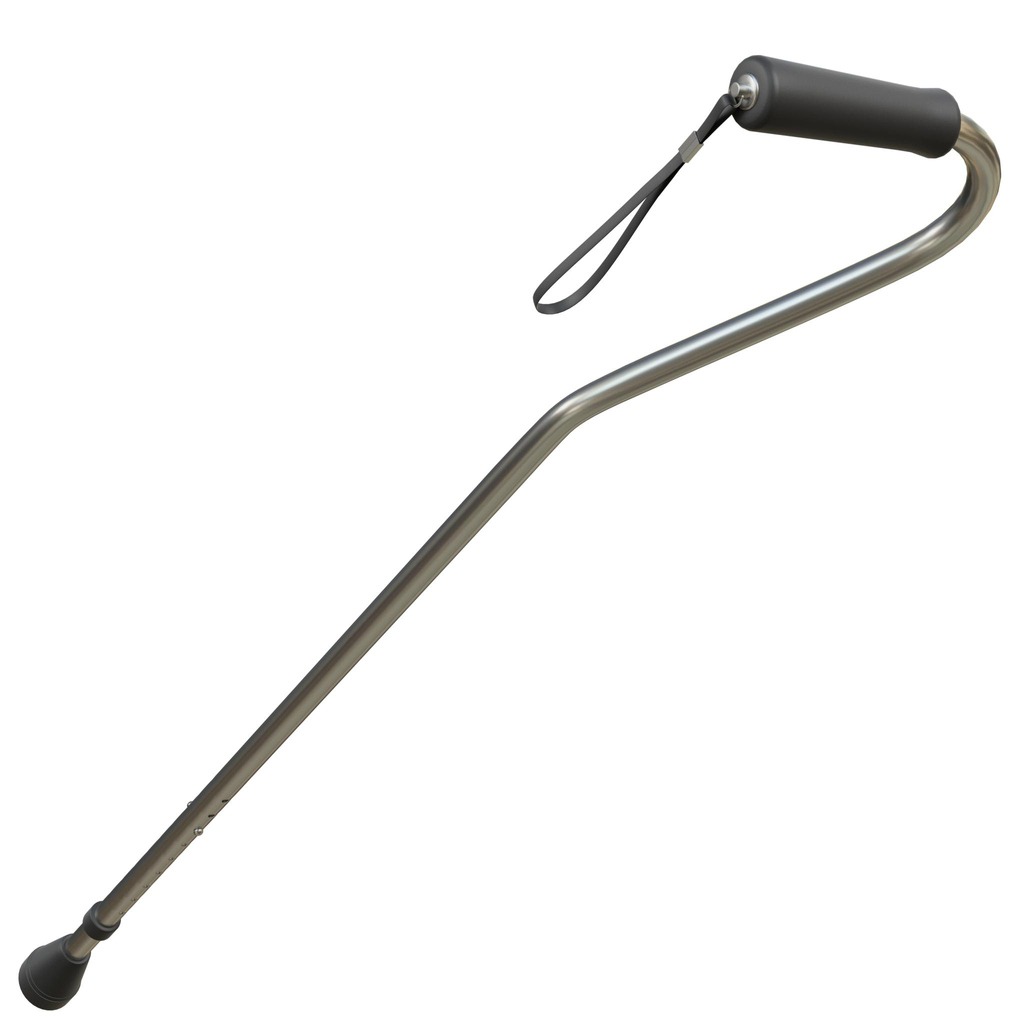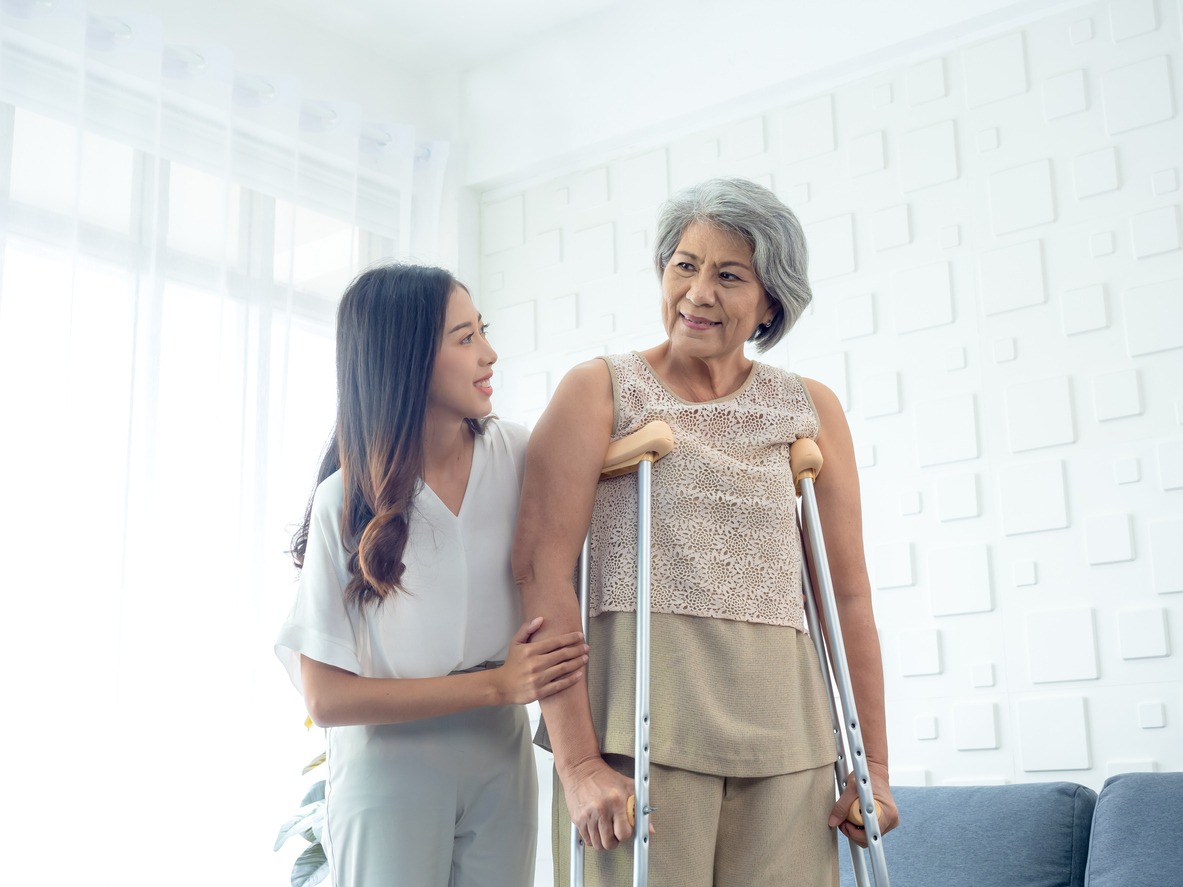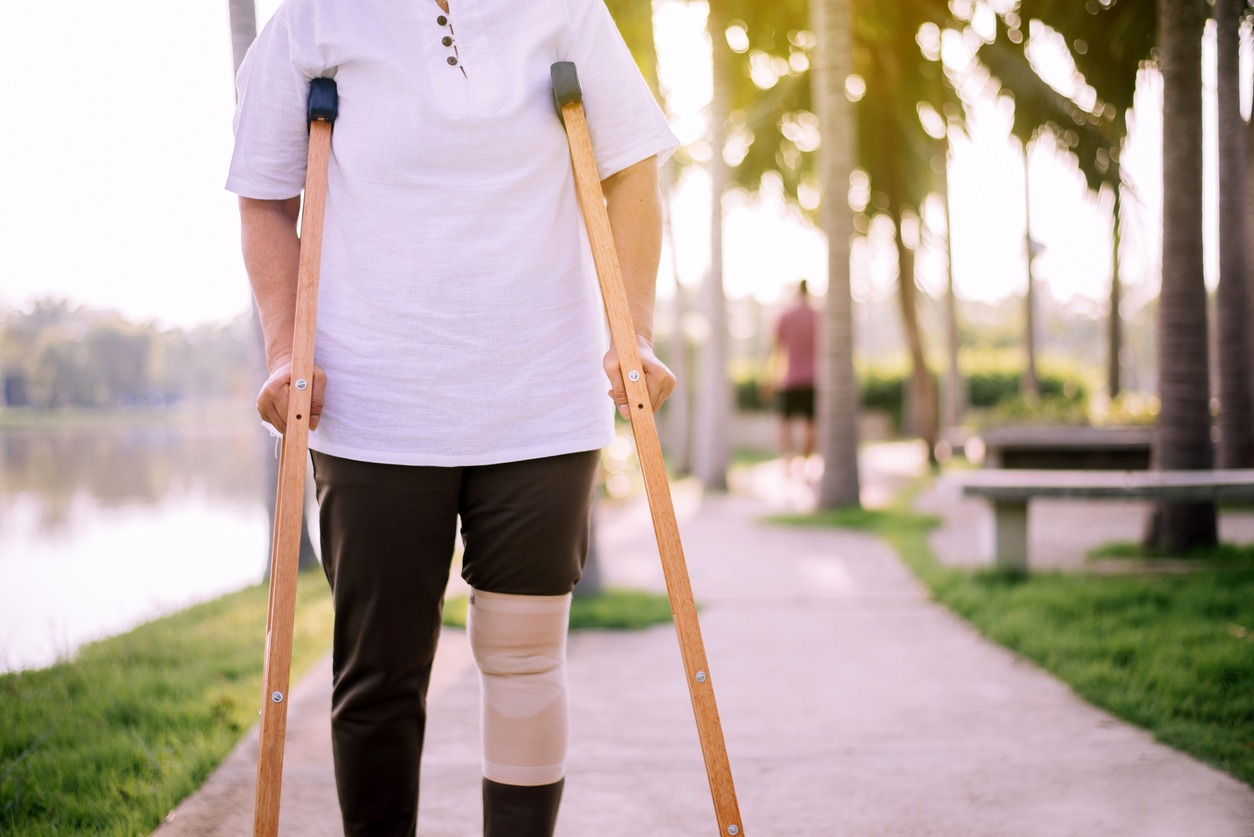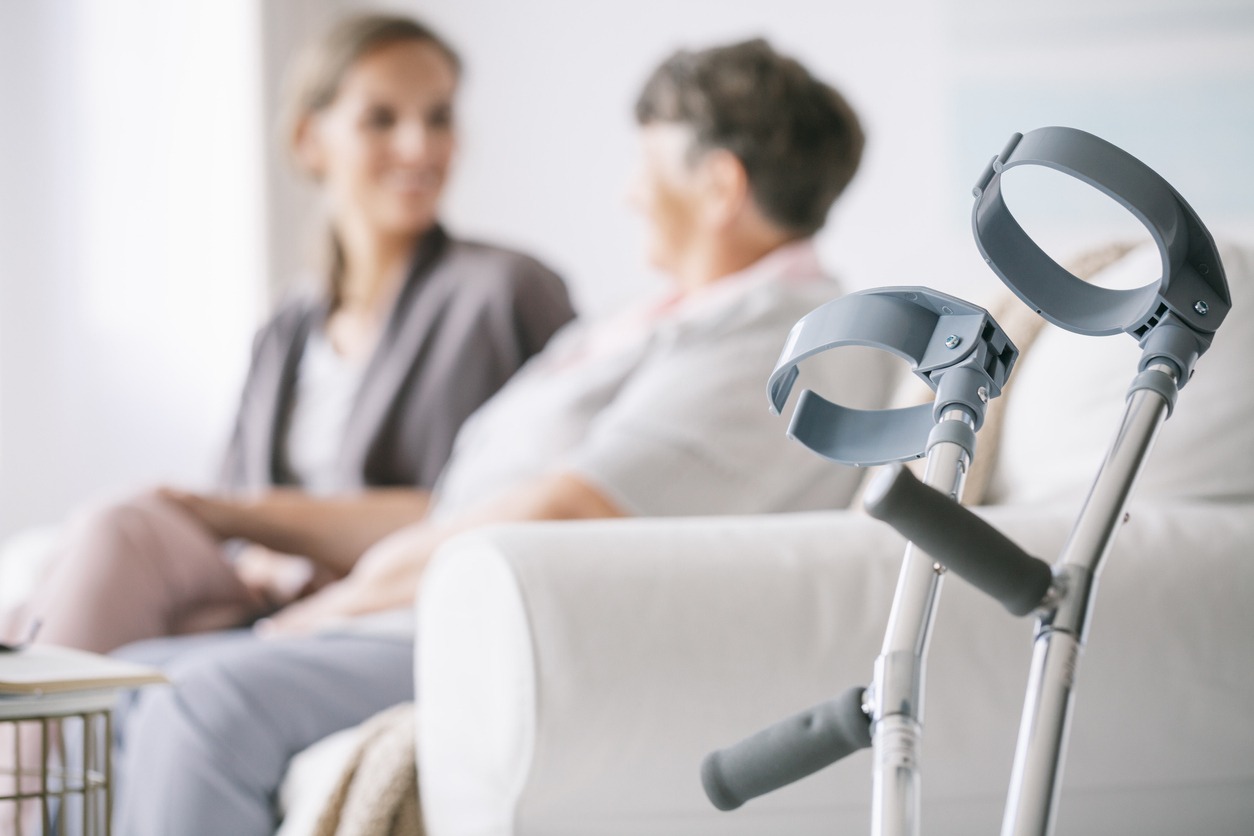As people age, it is uncommon for mobility challenges to arise, making it important to find the right assistive devices to maintain safety and independence. That is why in this article, we are going to discuss canes and crutches, including their types, features, and considerations to help seniors decide which one they need.
Whether you are a senior looking for assistance or a caregiver searching for the best options, this guide will give you valuable insights into the different options available. We will also provide you information about the importance of choosing the right cane or crutch based on individual needs, physical abilities, and lifestyle requirements. If you are seeking temporary assistance during recovery or for a long-term solution, we are here to help you. Read on and we’re giving you a guide to choosing canes and crutches for seniors.
How Can You Tell If a Senior Needs a Walking Aid?
Before we give you the tips and options when it comes to choosing canes and crutches, let us first understand who needs them. There are a lot of reasons an individual may be at an increased risk of falling and may benefit from a walking aid. There are certain health issues that affect a person’s balance, coordination, or strength, which can put him or her at risk. Below are the different issues seniors may have that may require them to use a walking aid:
Injuries
There are a lot of injuries, including fractures and sprains, that can affect a person’s ability to put weight on one leg. If this is the case, using a walking aid, such as a cane or a crutch, will allow an individual to move around without putting weight on the injured area. This is also true if a person is recovering from a surgery that affects mobility.
Pain
Even when there is no injury, walking and balance can be challenging for seniors who are suffering from chronic pain. Using canes and crutches may help them to offload weight from the painful area. Choosing the right device can make it so that seniors who have chronic pain will be able to walk farther and faster.
Sensory Changes
It is also hard to stay balanced when there are changes in normal sensations. This is true, particularly with conditions like neuropathy, which usually causes an individual’s feet to go numb. Seniors with neuropathy can be prone to tripping and falling. Therefore, the use of canes and crutches can be beneficial for them.
Vision Impairment
Another major cause of falls among seniors is vision problems. A lot of common eye conditions may cause impaired vision, such as cataracts, glaucoma, retinopathy, and macular degeneration. Therefore, if your senior loved one has vision impairment, walking aids like canes may help them with safe navigation.
Neurological Conditions
There are also many neurological conditions that may affect a person’s coordination, ability to respond quickly to changes in balance or position, and muscle strength. Some examples of these include dementia, stroke, and Parkinson’s disease. If your loved one is suffering from any of these, they may benefit from using canes and crutches to help them maintain their balance.
Other Conditions
There are also other conditions that may affect the balance and increase a senior’s risk for falls. Any condition that causes dizziness or weakness may benefit from using canes or crutches to help with balance.
What are Canes for Seniors?
Canes for seniors are walking aids that are specifically designed to give stability and support to people who may experience difficulty with balance, mobility, and strength. They are commonly used by seniors to enhance their independence and safety while navigating different environments.
Most canes consist of long shafts made of lightweight materials like aluminum or carbon fiber. They have a handle at the top, which is ergonomically designed for a comfortable grip. The bottom end of the cane is equipped with a rubber tip, which provides traction and stability on various surfaces.
Things to Consider When Buying Walking Canes for Seniors
If you are thinking of buying walking canes, whether for yourself or for your senior loved ones, there are some important considerations that you need to make in order to find the best one that will match your needs and preferences. Below are some of them:
Style
If the cane is intended to be used daily, the traditional candy-cane style with a curved handle may not be your best choice as it can be hard to grip. There are other hand grip styles and shapes that you can choose from. Make sure that you pick one that feels more comfortable. Also, canes with four feet offer greater stability than straight canes, but they can be cumbersome to use. Also, a lightweight cane is less of a burden compared to a heavier one. But all styles have one purpose, which is to help take the weight off a painful joint or leg.
Length
You can choose the length of the cane more effectively by standing up straight with shoes on and letting your arms hang at your sides. The top of the cane’s handle should be aligned with the crease of your wrist. When you hold the cane while standing, your elbow should be flexed around a 30-degree angle. If you choose to use a wooden cane, it needs to be cut to the correct height. But for more convenience, you may also opt for adjustable canes that can be lengthened or shortened to fit.
Weight Capacity
You also need to consider the weight capacity of the cane to ensure that it can safely support the body weight of the senior. Most canes have weight limits specified by the manufacturer, and it is important to pick one that matches or exceeds the user’s weight.
Maneuverability
It is also important to consider the maneuverability of the cane in different environments. There are canes with swiveling or pivoting bases, which provide greater flexibility and adaptability on uneven surfaces or tight spaces.
Consultation and Fitting
It is also advisable to consult with a healthcare professional or therapist who can assess the specific needs of the senior and provide guidance on choosing the most suitable cane. They can assist with proper fitting, demonstrate proper usage techniques, and ensure the cane meets safety requirements.
The Different Types of Canes for Seniors
There are several types of canes available in the market. Each of these types caters to specific needs. To help you, below are the different types of canes for seniors:
Standard Canes
These canes have a single tip and are usually used by seniors who need minimal support or assistance with balance. These are straightforward when it comes to design and can provide the most basic stability for seniors. Below are some examples of standard canes to help you choose:
- Days Standard Cane for Elderly and Handicapped
- Medline Standard Aluminum Cane
- DMI Walking Cane and Walking Stick
- McKesson Walking Cane with Foam Round Handle
- Carex Solid Wood Walking Cane
Quad Canes
Quad canes are also known as four-point canes. They feature a base with four legs that provide enhanced stability and balance. The additional points of contact with the ground make them great for seniors who need extra support and increased weight-bearing capacity. Below are some examples of quad canes to help you pick:
- RMS Quad Cane
- Hugo Adjustable Quad Cane for Right or Left Hand
- BeneCane Adjustable Walking Quad Cane
- Carex Quad Cane with Small Base
- HealthSmart Quad Walking Cane
Offset Canes
These canes feature an ergonomic handle that is set to one side of the shaft, creating an offset design. It helps distribute weight more evenly and reduces strain on the wrist and hand. Offset canes are a great choice for seniors who are suffering from arthritis or joint pain. Below are some examples of offset canes to help you choose:
- Carex Ergo Offset Cane with Soft Cushioned Handle
- McKesson Cane with Offset Handle
- Essential Medical Supply Couture Offset Fashion Cane
- Drive Medical Cane with Offset Handle and Adjustable Height
- Hugo Mobility Aid Adjustable Walking Cane with Offset Handle
Folding Canes
These canes are convenient for seniors who travel a lot or need a portable option. Folding canes can be folded easily and stored in a bag or suitcase when not in use. Below are some examples of folding canes to help you pick:
- Vive Foldable Walking Cane
- PANZHENG Foldable Walking Cane
- Switch Sticks Foldable Walking Cane
- Vaunn Medical Easy Grip™ Height Adjustable Folding Cane
- Golkur Foldable Walking Cane
What are Crutches for Seniors?
Crutches for seniors are mobility aids that are made to give support and assistance to individuals who have temporary or long-term difficulty walking or bearing weight on one or both legs. Crutches are commonly used by seniors recovering from injuries or surgeries, or experiencing conditions that affect their lower extremities. They are for individuals who have good coordination and upper body strength.
There are two main components in crutches, which are the upper section, known as the cuff or handle, and the lower section, known as the shaft or leg. Crutches are commonly made of lightweight materials like carbon fiber or aluminum to minimize the strain on the user.
Things to Consider When Choosing Crutches for Seniors
If you are planning to buy crutches for seniors, there are some important factors that you need to consider in order to find the best one that will match their needs. To help you, below are some essential things you need to consider:
Height Adjustability
Crutches for seniors should be adjustable in height in order to ensure proper fit and provide comfort and stability. The height of the crutches should be adjusted so that the elbows of the senior are slightly bent when holding the hand grips.
Weight Capacity
It is important to check the weight capacity of the crutches to ensure that they can support the body weight of the senior. Check the weight limits specified by the manufacturer and pick one that can bear the user’s weight safely.
Grip Comfort
The cuffs or hand grips should be padded and comfortable to hold. They should distribute pressure evenly to minimize discomfort and potential nerve compression. There are some crutches that offer ergonomic grips or padding options for added comfort.
Stability and Base
It is also essential to assess the design and stability of the crutch base. Search for non-slip tips that provide traction and stability on different surfaces. The base of the crutches should be wide enough to offer balance and prevent slipping.
Fitting and Training
Proper fitting is important to ensure the crutches are adjusted correctly for the height and comfort of the senior. It is advisable to consult with a healthcare professional or therapist who can assist with fitting and provide training on proper usage, weight-bearing techniques, and navigating different terrains.
The Different Types of Crutches for Seniors
There are different types of crutches available in the market, each offering specific benefits for different needs and preferences. To further help you choose, below are the different types of crutches for seniors:
Underarm Crutches
This type of crutch is also called axillary crutch. They feature padded cuffs that fit under the arms. The weight of the user is partially supported by the underarms, and handgrips provide stability and control. Underarm crutches are for seniors who can bear some weight on their legs but need additional support. Below are some examples of underarm crutches to help you pick:
- BodyMed Aluminum Underarm Crutches
- McKesson Aluminum Underarm Crutches
- Drive Medical Crutches
- Hugo Mobility Underarm Crutches
- The Life Crutch Universal Underarm Crutches
Forearm Crutches
Forearm crutches are also called elbow crutches or Lofstrand crutches. They have a cuff that wraps around the forearm, allowing the user to bear weight on their arms and hands. This type of crutch provides more freedom of movement and stability compared to underarm crutches. Forearm crutches are best for seniors who have better upper body strength and balance. Below are some examples of forearm crutches for seniors to help you choose:
- Medline Aluminum Forearm Crutches
- Switch Sticks Euro Style Forearm Crutches
- Drive Medical Forearm Crutch
- BigAlex Forearm Crutches for Adults
- Thomas Fetterman Walk Easy 495 Adjustable Forearm Crutches
Platform Crutches
Platform crutches are sometimes referred to as triceps crutches. They feature a platform instead of a handgrip. The forearm of the user rests on the platform, providing support. Platform crutches are often used by seniors who have limited grip strength or wrist and hand conditions that make traditional hand grips challenging to use. Below are some examples of platform crutches to help you pick:
- KMINA PRO Hands-Free Platform Crutches
- Drive Medical Platform Crutch Attachment
- Platform Crutch Attachment to Your Crutch
Conclusion
Choosing the right cane or crutches for seniors is indeed a crucial decision that can affect their mobility and safety. By considering the different factors that we’ve provided in this article, you’ll be able to pick the most suitable mobility aid to meet their specific needs. Both canes and crutches provide stability and support for seniors when they find walking challenging due to different health or medical reasons. Consulting with healthcare professionals or therapists is also beneficial to ensure that you are getting the correct cane or crutches. We hope this article helped you learn more about choosing canes and crutches for seniors.




